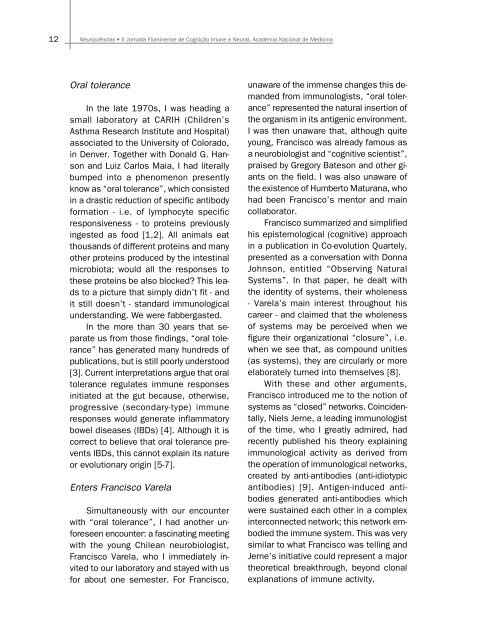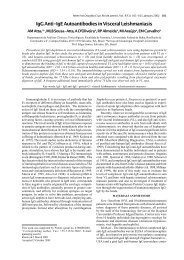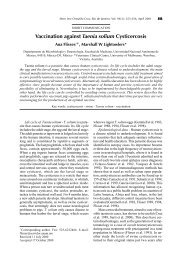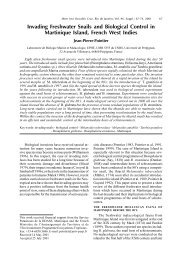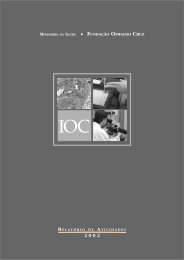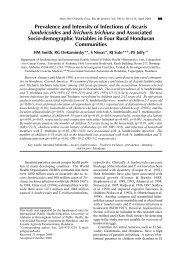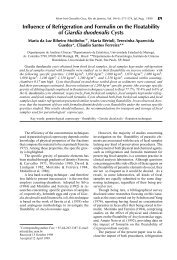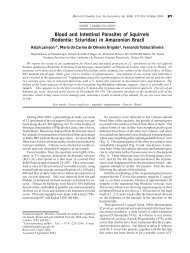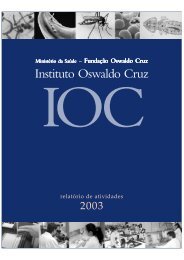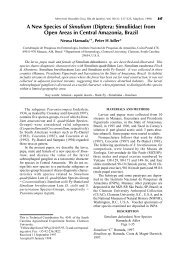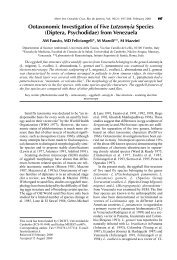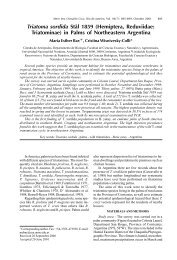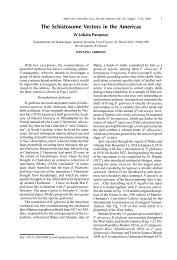Acesse aqui o texto completo dos Artigos referentes às ... - Fiocruz
Acesse aqui o texto completo dos Artigos referentes às ... - Fiocruz
Acesse aqui o texto completo dos Artigos referentes às ... - Fiocruz
You also want an ePaper? Increase the reach of your titles
YUMPU automatically turns print PDFs into web optimized ePapers that Google loves.
12NeurociênciasOral toleranceIn the late 1970s, I was heading asmall laboratory at CARIH (Children’sAsthma Research Institute and Hospital)associated to the University of Colorado,in Denver. Together with Donald G. Hansonand Luiz Carlos Maia, I had literallybumped into a phenomenon presentlyknow as “oral tolerance”, which consistedin a drastic reduction of specific antibodyformation - i.e. of lymphocyte specificresponsiveness - to proteins previouslyingested as food [1,2]. All animals eatthousands of different proteins and manyother proteins produced by the intestinalmicrobiota; would all the responses tothese proteins be also blocked? This leadsto a picture that simply didn’t fit - andit still doesn’t - standard immunologicalunderstanding. We were fabbergasted.In the more than 30 years that separateus from those findings, “oral tolerance”has generated many hundreds ofpublications, but is still poorly understood[3]. Current interpretations argue that oraltolerance regulates immune responsesinitiated at the gut because, otherwise,progressive (secondary-type) immuneresponses would generate inflammatorybowel diseases (IBDs) [4]. Although it iscorrect to believe that oral tolerance preventsIBDs, this cannot explain its natureor evolutionary origin [5-7].Enters Francisco VarelaSimultaneously with our encounterwith “oral tolerance”, I had another unforeseenencounter: a fascinating meetingwith the young Chilean neurobiologist,Francisco Varela, who I immediately invitedto our laboratory and stayed with usfor about one semester. For Francisco,unaware of the immense changes this demandedfrom immunologists, “oral tolerance”represented the natural insertion ofthe organism in its antigenic environment.I was then unaware that, although quiteyoung, Francisco was already famous asa neurobiologist and “cognitive scientist”,praised by Gregory Bateson and other giantson the field. I was also unaware ofthe existence of Humberto Maturana, whohad been Francisco’s mentor and maincollaborator.Francisco summarized and simplifiedhis epistemological (cognitive) approachin a publication in Co-evolution Quartely,presented as a conversation with DonnaJohnson, entitled “Observing NaturalSystems”. In that paper, he dealt withthe identity of systems, their wholeness- Varela’s main interest throughout hiscareer - and claimed that the wholenessof systems may be perceived when wefigure their organizational “closure”, i.e.when we see that, as compound unities(as systems), they are circularly or moreelaborately turned into themselves [8].With these and other arguments,Francisco introduced me to the notion ofsystems as “closed” networks. Coincidentally,Niels Jerne, a leading immunologistof the time, who I greatly admired, hadrecently published his theory explainingimmunological activity as derived fromthe operation of immunological networks,created by anti-antibodies (anti-idiotypicantibodies) [9]. Antigen-induced antibodiesgenerated anti-antibodies whichwere sustained each other in a complexinterconnected network; this network embodiedthe immune system. This was verysimilar to what Francisco was telling andJerne’s initiative could represent a majortheoretical breakthrough, beyond clonalexplanations of immune activity.


